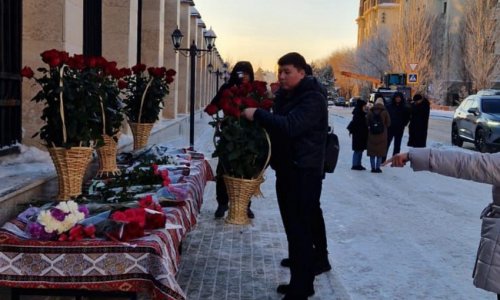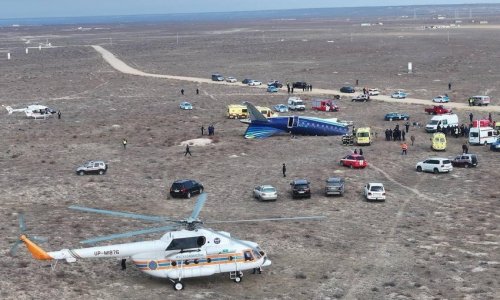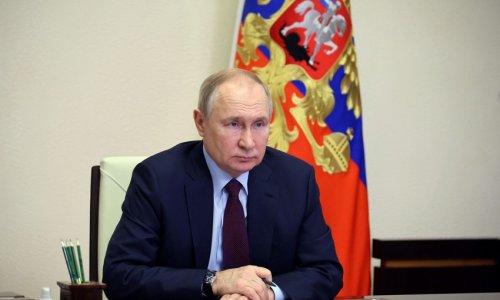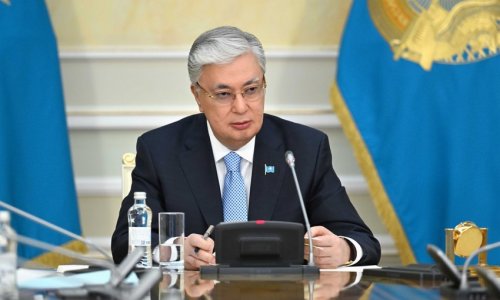Follow us !
Ukraine crisis: What we know about the Kiev snipers
World
12:29 | 04.04.2014

Ukraine crisis: What we know about the Kiev snipers
Controversy surrounds the mass shooting of protesters in Kiev which precipitated the downfall of former Ukrainian President Viktor Yanukovych.It is clear that firearms were used by government security forces, and possibly by some opposition activists, but the identity of the snipers said to have caused many of the deaths is disputed.How many died?About 90 people.On the bloodiest day, Thursday 20 February, more than 50 protesters were shot dead on Instytutska Street and other roads around the city's main square, the Maidan. Two days earlier, more than 20 were killed, many of them beaten by riot police.Seventeen police officers also died that week, some of them from gunshot wounds.How did the bloodiest day unfold?BBC correspondent Daniel Sandford saw the carnage in central Kiev on 20 February for himself.He reported first seeing injured police officers being loaded into ambulances. It was unclear how they had been hurt but possible that they had been hit by gunfire, he said.Very soon afterwards, the BBC team saw armed police pulling back from the main square. As protesters rushed up the hill towards them, the police opened fire with automatic weapons and the square resounded with the sound of heavy gunfire.The retreating police appeared to be firing at will, our correspondent said.Shooting continued for about two hours, after which the police withdrew, leaving only a few snipers in place.Whom do the new authorities blame?The new revolutionary government accuses Mr Yanukovych of ordering police to open fire on 18-20 February, and Russian agents of playing a part in the killings.The interim Interior Minister, Arsen Avakov, said 12 members of the elite riot police unit Berkut (since disbanded by the new government) had been identified as suspects in the shooting of 17 people on Instytutska Street.The same automatic weapon was used to kill eight of the victims, he told reporters.Valentyn Nalyvaychenko, the new head of Ukraine's security service (SBU), said some Berkut suspects were now in Crimea, the Ukrainian region annexed by Russia in March."Agents of [Russia's Federal Security Service] the FSB took part in both the planning and execution of the so-called anti-terrorist operation," he told reporters. Unidentified Russians were present at SBU headquarters during the protests in Kiev this winter, he said.Anyone else?According to Mr Nalyvaychenko, the Yanukovych government deployed 108 members of the SBU's own elite anti-terrorist unit Alfa to seize back a building from the opposition in Kiev on 18 February.Alfa members are being investigated to see whether they played a part in the killings, Ukrainian media say.An article on the US news website The Daily Beast argues that the unit played a direct part in the shootings of 20 February. It published photos which are said to show heavily armed Alfa members loading kit into unmarked vans in a courtyard.In one of the more unusual theories, based on similarities in the victims' bullet wounds, interim Health Minister Oleh Musiy has argued that protesters and police alike were shot with the same rifles as part of a plot by erstwhile Yanukovych allies to turn the people against him."I think it wasn't just a part of the old regime that [plotted the provocation] but it was also the work of Russian special forces who served and maintained the ideology of the [old] regime," he said.What does Yanukovych say?The deposed president insists he never ordered security forces to open fire and accuses the radical opposition of starting the shooting."No power is worth a drop of blood," he said on 2 April, in his first interview since fleeing to Russia."Many times my supporters urged me to act resolutely against Maidan but I didn't do it... We should have disarmed [the radical elements]. Now the same elements are a headache to the new leaders."What is the Russian line?An FSB spokesman in Moscow implicitly denied involvement in the shootings. "Let those allegations remain on the conscience of the SBU," he said.Foreign Minister Sergei Lavrov has said Russia has information that the Ukrainian far-right group Right Sector co-ordinated sniper attacks in Kiev."I can't claim that it is 100% true but there are a lot of facts that point to that," he told Russian broadcaster RT.Who had guns?Video and still photographs from the streets show Mr Yanukovych's security forces were armed with assault rifles and that they used at least one sniper rifle.Opposition activists were seen with guns during the winter protests, but on a much lesser scale. At least some of the weapons they used were air rifles rather than deadly firearms.What does the evidence point to?It is believed that much of the shooting was directed from buildings, out of sight of the media.British forensic experts travelled to Kiev soon after the killings to gather evidence which may be used in future prosecutions.The investigators, who did not wish to be named, told BBC News they had pinpointed at least four sniper positions.The new authorities have identified two places where they think snipers operated from, on Khreshchatyk Street and Kostiolna Street, but it is believed snipers also opened fire from the Ukraina hotel and the National Bank building.(BBC)ANN.Az










